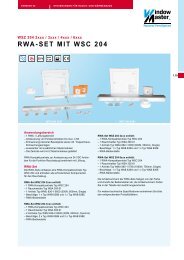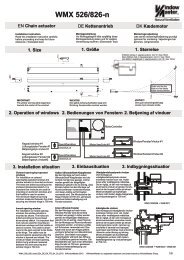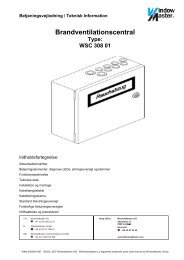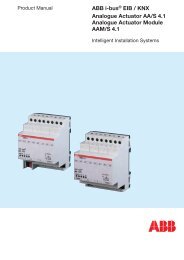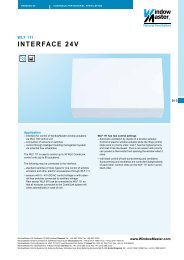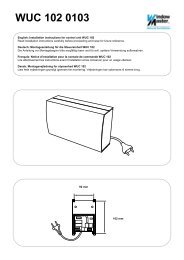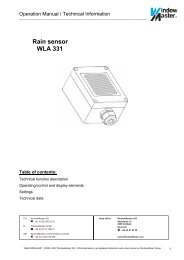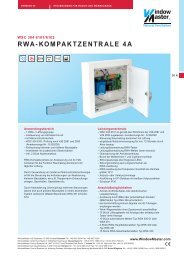ABB i-bus® EIB Universal Interfaces US/U 4.2 US/U ... - WindowMaster
ABB i-bus® EIB Universal Interfaces US/U 4.2 US/U ... - WindowMaster
ABB i-bus® EIB Universal Interfaces US/U 4.2 US/U ... - WindowMaster
You also want an ePaper? Increase the reach of your titles
YUMPU automatically turns print PDFs into web optimized ePapers that Google loves.
<strong>ABB</strong> i-bus ® <strong>EIB</strong><br />
<strong>Universal</strong> <strong>Interfaces</strong><br />
<strong>US</strong>/U 2.2, GH Q631 0074 R0111<br />
<strong>US</strong>/U <strong>4.2</strong>, GH Q631 0070 R0111<br />
Parameter: “Counter values are being transmitted every”<br />
This parameter is visible if the parameter “Transmit counter values cyclically”<br />
has been set to “yes”. It can be set in which intervals the values are sent<br />
cyclically on the bus.<br />
Parameter: “Enable differential counter”<br />
The object “Differential counter” is made visible via this parameter.<br />
The differential counter can e.g. take over the function of a daily counter.<br />
Parameter: “Over-/underrun of differential counter at”<br />
This parameter is visible if the parameter “Enable differential counter”<br />
is set to “yes”.<br />
It can be set in this parameter which value generates an overflow of the<br />
differential counter. In the event of an overflow, the same rules apply as for<br />
the standard counter. The object “Differential counter overflow” is sent<br />
in this case.<br />
4.13.2 Communication objects<br />
Object: “Telegr. counter value … bytes”, 1 to 4 bytes<br />
This object contains the absolute counter content of the pulse counter.<br />
The counter can have a data width of 1 byte, 2 bytes and 4 bytes.<br />
The following table provides an overview of the data types:<br />
Data width EIS type Value range<br />
1 byte EIS 14 0...255<br />
2 bytes EIS 10 -32.768...32.767<br />
2 bytes EIS 10 0...65.535<br />
4 bytes EIS 11 -2.147.483.648...2.147.483.647<br />
Object: “Differential counter … bytes”, 1 to 4 bytes<br />
This object is visible if the value “yes” has been set in the parameter<br />
“Enable differential counter”.<br />
The object contains the status of the differential counter which is identical<br />
to the absolute counter in its counting function. In contrast to this counter<br />
however, it can be reset (object “Reset differential counter”) and a counter<br />
overflow can be reported on the bus (object “Differential counter overflow”).<br />
Daily consumption values for example can be measured via the differential<br />
counter.<br />
As soon as the differential counter reaches, exceeds or falls below the overflow<br />
value defined in the parameter “Over-/underrun of differential counter at”,<br />
the overflow value is deducted from the value of the differential counter.<br />
Object: “Request counter values”, 1 bit (EIS 1)<br />
The values of the absolute counter and the differential counter are requested<br />
via this object.<br />
Telegram value: “0” No reaction<br />
“1” Send counter values<br />
39



